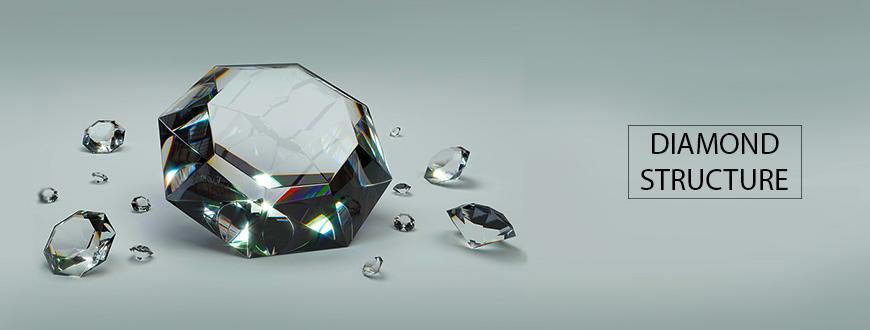Kalyan Wiki

Diamond Structure
A Diamond is considered to be the hardest substance on Earth. The etymology of the word diamond is from ‘Adamas’ in Greek meaning the hardest substance. A diamond is formed inside the Earth due to high pressure and at times due to meteorite impact. Some diamonds are formed as a result of meteorites having stardust which contain diamond crystals impacting on Earth. The primary component of the diamond is carbon in its purest form.
The carbon present in natural diamonds is basically from the mantle of the Earth. In some other diamonds, carbon is obtained from recycled carbon present in a microorganism, converted to diamond through the pressure from the Earth’s crust or through the tectonic plate movements. In certain other cases, carbon present at the site of meteorite impact will result in the formation of diamonds due to the pressure or the stardust present in the meteorites may also result in the formation of diamond crystals.
The diamond has a crystal structure of face centred cubic lattice commonly known as FCC lattice. The cubic form of highly symmetrical atomic arrangement results in different shapes in which diamonds appear. This is called crystal habits. The diamond shape or the eight-sided octahedron is a common crystal habit. Dodecahedra, cubes and combinations of both are the other crystal habits that occur in nature. Diamonds separate perfectly along with the cleavages into different directions rather than breaking in jagged form. This results from the lesser number of chemical bonds in the planner region of the octahedral face than in other directions. Graphite and diamond have only a small difference in the electron volt. Diamonds do not reconvert to graphite because of the very high energy barrier. The method stability of diamond is related to the kinetic stability that it has. Diamonds have better stability than graphite due to the high temperature and pressure conditions required for developing diamonds.







